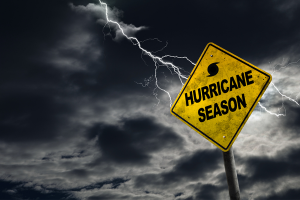Courtesy of iii.org
 Whether you’re hosting a Super Bowl party for 50 or greeting the New Year with a few friends, if you’re planning to serve alcohol at your home take steps to limit your liquor liability and make sure you have the proper insurance.
Whether you’re hosting a Super Bowl party for 50 or greeting the New Year with a few friends, if you’re planning to serve alcohol at your home take steps to limit your liquor liability and make sure you have the proper insurance.
Social host liability is the legal term for the criminal and civil responsibility of a person who furnishes liquor to a guest. Social host liability can have serious consequences for party throwers.
Social host liability law
Also known as “Dram Shop Liability,” social host liability laws vary widely from state to state, but 43 states have them on the books. Most of these laws also offer an injured person, such as the victim of a drunk driver, a method to sue the person who served the alcohol. There are circumstances under these laws where criminal charges may also apply.
While a social host is not liable for injuries sustained by a drunken guest (as the guest is also negligent), the host can be held liable for harm to third parties, and even for passengers of the guest who have been injured in their car.
Social host liability—insurance considerations
Homeowners insurance usually provides some liquor liability coverage, but limits are typically $100,000 to $300,000, which, depending on your assets, might not be enough. Before planning a party in your home, speak to your insurance professional to review your homeowners coverage for any exclusions, conditions or limitations your policy might have that would affect your social liability risk.
Protect yourself and your guests
Remember that a good host is a responsible host. If you plan to serve alcohol at a party, promote safe alcohol consumption and take these steps to reduce your social host liability exposure:
- Make sure you understand your state laws. These laws vary widely from state to state (see final chart). Some states do not impose any liability on social hosts. Others limit liability to injuries that occur on the host’s premises. Some extend the host’s liability to injuries that occur anywhere a guest who has consumed alcohol goes. Many states have laws that pertain specifically to furnishing alcohol to minors.
- Consider venues other than your home for the party. Hosting your party at a restaurant or bar with a liquor license, rather than at your home, will help minimize liquor liability risks.
- Hire a professional bartender. Most bartenders are trained to recognize signs of intoxication and are better able to limit consumption by partygoers.
- Encourage guests to pick a designated driver who will refrain from drinking alcoholic beverages so that he or she can drive other guests home.
- Limit your own alcohol intake as a responsible host/hostess, so that you will be better able to judge your guests’ sobriety.
- Offer non-alcoholic beverages and always serve food. Eating and drinking plenty of water, or other non-alcoholic beverages, can help counter the effects of alcohol.
- Do not pressure guests to drink or rush to refill their glasses when empty. And never serve alcohol to guests who are visibly intoxicated.
- Stop serving liquor toward the end of the evening. Switch to coffee, tea and soft drinks.
- If guests drink too much or seem too tired to drive home, call a cab, arrange a ride with a sober guest or have them sleep at your home.
- Encourage all your guests to wear seatbelts as they drive home. Studies show that seatbelts save lives.



